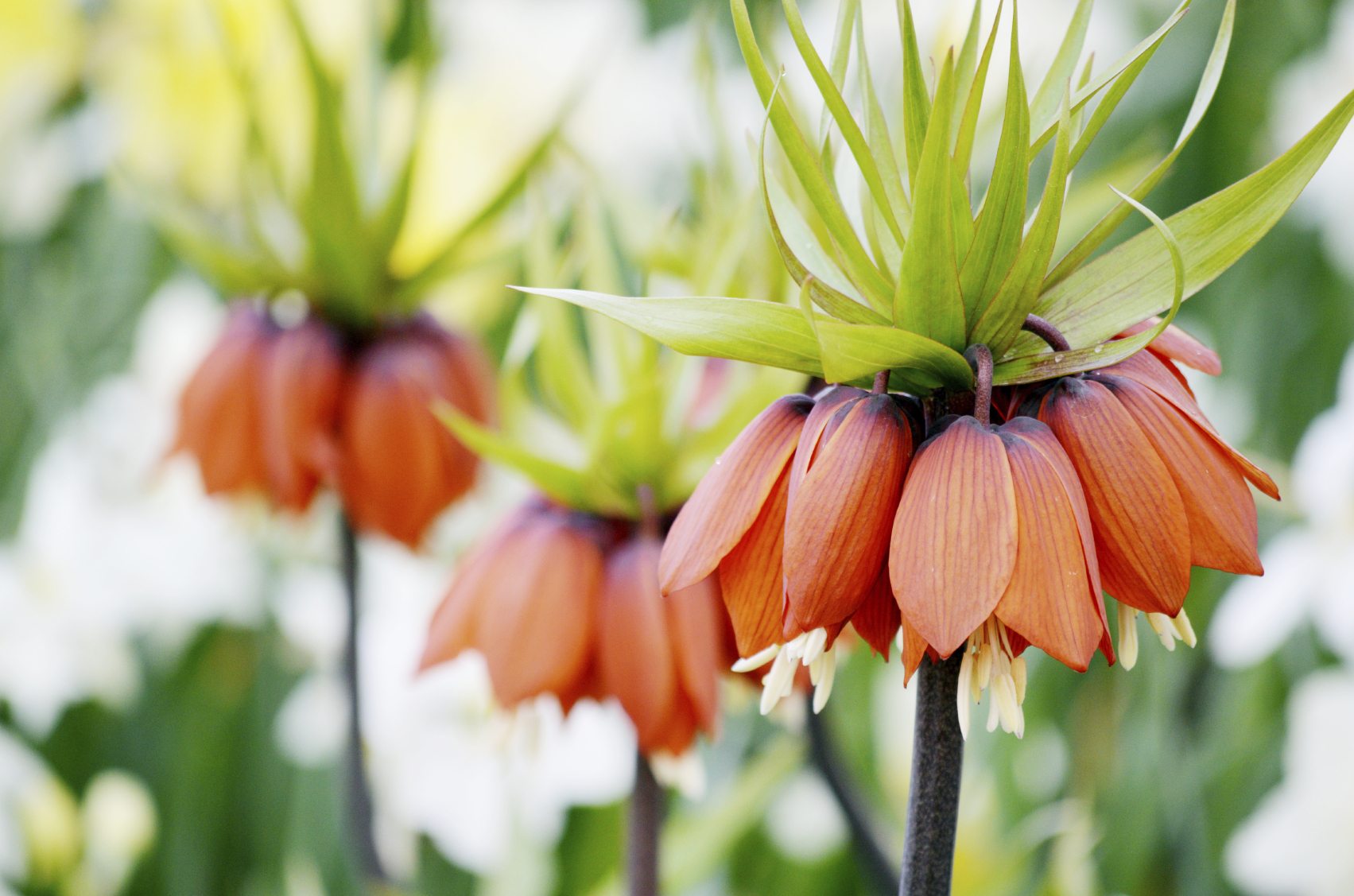Growing Fritillaria Bulbs - How To Grow And Care For Wildflower Fritillaria Lilies


Delicate and exotic, Fritillaria flower varieties may appear difficult to grow, but most Fritillaria care is simple after the large bulbs bloom. Fritillarias are true lilies, growing from non-tunicate bulbs. Fritillaria imperialis, or Crown Imperial, has the showiest flowers of the species, but some say it also has a malodorous fragrance reminiscent to that of skunk odor. These Fritillaria bulbs have nodding flowers, topped with a tuft of foliage. Another of the wildflower Fritillaria lilies is the snakeshead lily, Fritillaria meleagris. This flower has a checkered or mottled pattern on the drooping blooms. Information on the Fritillaria plant indicates that most are Asian or European natives; however, Fritillaria pudica is native to western North America. Information on the Fritillaria plant also describes the Chocolate lily, Fritillaria affinis, which grows wild in southeastern Canada south to the San Francisco bay area.
Growing Fritillaria Bulbs
Unusual and hardy, Fritillaria bulbs produce best when planted in moist soil in a sunny to part shade location in the flower bed. Wildflower Fritillaria lilies are an excellent choice for the gardener who wants an out of the ordinary specimen among more common spring-blooming bulbs. Growing Fritillaria may reach 4 feet (1 m.) or more in spring. Use wildflower Fritillaria lilies as specimens, in groupings, or as an addition to a traditional bulb bed. Imperialis and meleagris types are available in some local nurseries and through mail order catalogs. Be prepared to plant bulbs as soon as they arrive. Plant larger bulbs with the base about 5 inches (13 cm.) below the soil surface, while smaller Fritillaria bulbs should be planted about 3 inches (7.5 cm.) down. Plant bulbs in well-drained soil and keep it moist until the root system is established.
Fritillaria Care
Fritillaria bulbs resist deer, squirrels, and bulb digging rodents and may help protect other bulbs that are favorites of the critters. Wildflower Fritillaria lilies, as with other lily bulbs, like cool roots. If possible, plant a low growing ground cover to shade bulbs of the growing Fritillaria plant or mulch the plant to protect it from the summer sun. Separate wildflower Fritillaria lilies every two years. Remove young bulblets and replant in moist, shady conditions for more of this unusual flower every year.
Gardening tips, videos, info and more delivered right to your inbox!
Sign up for the Gardening Know How newsletter today and receive a free copy of our e-book "How to Grow Delicious Tomatoes".

Becca Badgett was a regular contributor to Gardening Know How for ten years. Co-author of the book How to Grow an EMERGENCY Garden, Becca specializes in succulent and cactus gardening.
-
 Looking For Plants To Give You The Soft And Fuzzies? Try These 5 Fuzzy Leaf Plant Options
Looking For Plants To Give You The Soft And Fuzzies? Try These 5 Fuzzy Leaf Plant OptionsLovers of texture, drama, silver foliage and tactile plants will adore these special sensory garden additions. These fuzzy leaf plant options will leave you all aglow
By Susan Albert
-
 Get Ready For A Summer Of Hummers! Grow These Full Sun Hummingbird Plants and Flowers
Get Ready For A Summer Of Hummers! Grow These Full Sun Hummingbird Plants and FlowersIf you’re lucky enough to enjoy a sunny backyard, make sure you are maxing out on your pollinator opportunities and grow these full sun hummingbird plants and flowers
By Tonya Barnett
-
 Growing Fritillary Flowers: Planting Fritillaria Michailovskyi Bulbs
Growing Fritillary Flowers: Planting Fritillaria Michailovskyi BulbsGrowing fritillary flowers is a fun way to add a unique bulb to beds. Learn about Michael’s flower fritillary and its unique flowers here.
By Mary Ellen Ellis
-
 Crown Imperial Fritillaria: How To Grow Crown Imperial Plants
Crown Imperial Fritillaria: How To Grow Crown Imperial PlantsCrown imperial plants are lesser-known perennials that make for a striking border for any garden. Learn more about growing crown imperial flowers in this article so you can enjoy the interesting blooms in your garden.
By Liz Baessler